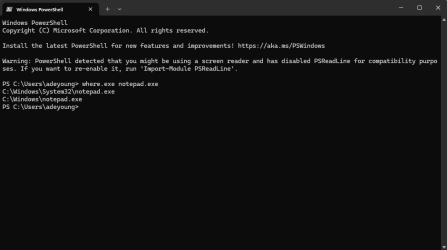classic35mm
Member
- Local time
- 11:33 AM
- Posts
- 57
- OS
- Windows 11 23H2 22631.3527
I'm running Windows 11 Enterprise, 23H2, 22631.3527 (64-bit). When I execute
These are both the "old" notepad, I think.

where.exe notepad.exe in Windows PowerShell, it returns locations of two notepad.exe files:
Powershell:
C:\Windows\System32\notepad.exe
C:\Windows\notepad.exeThese are both the "old" notepad, I think.
- What is the difference between these two executables?
- Which of these executables should I link to in a shortcut to the "old" notepad? Maybe I should use
C:\Windows\notepad.exebecause my system is 64-bit, not 32-bit?

- Windows Build/Version
- 23H2, 22631.3527
My Computer
System One
-
- OS
- Windows 11 23H2 22631.3527
- Computer type
- PC/Desktop
- Manufacturer/Model
- Lenovo ThinkStation P3






